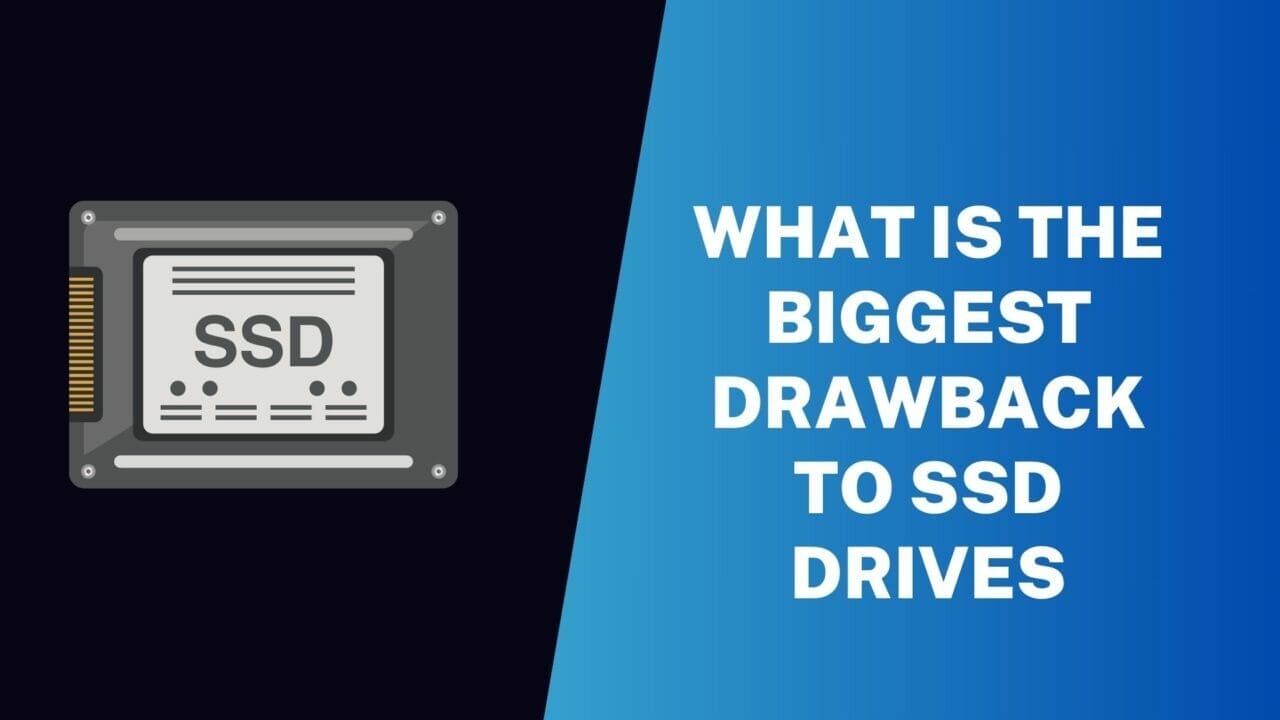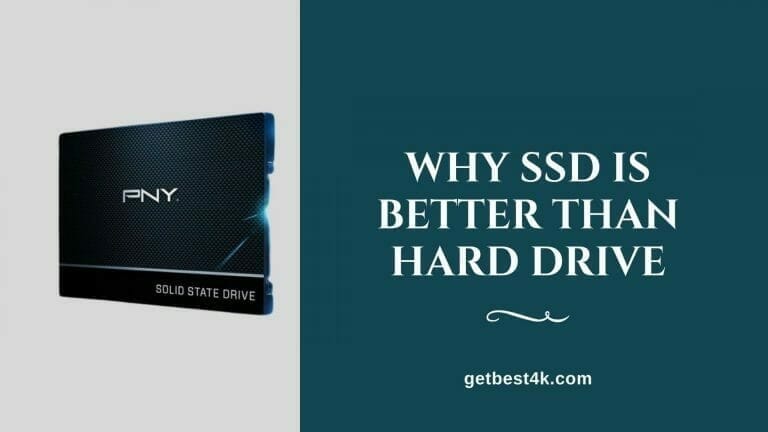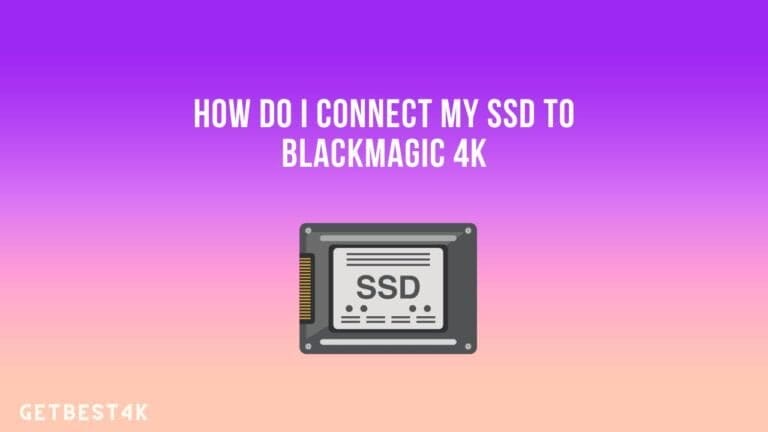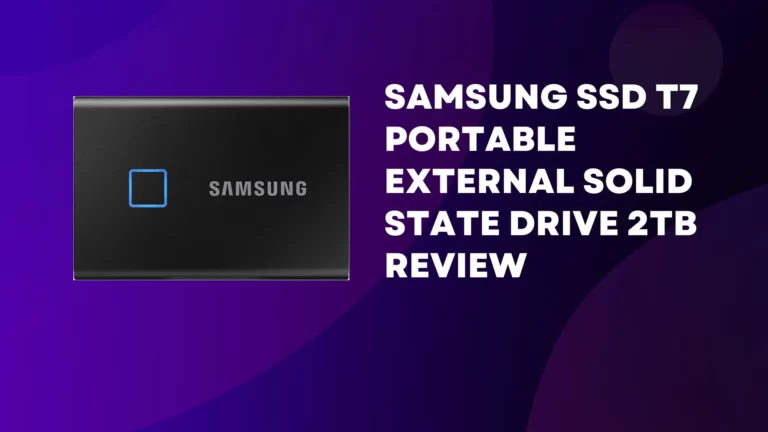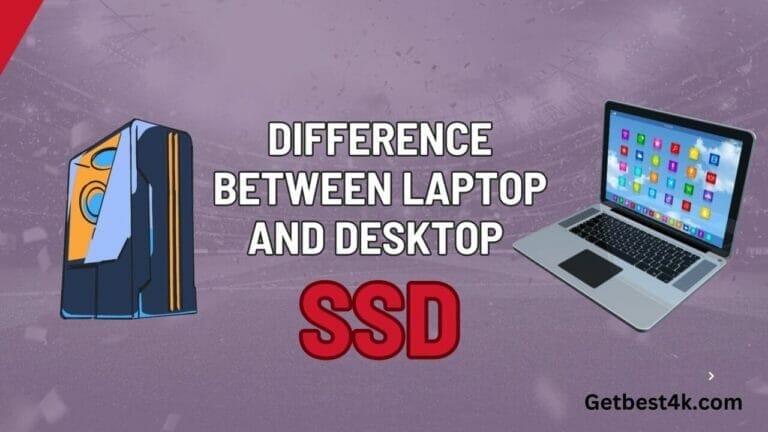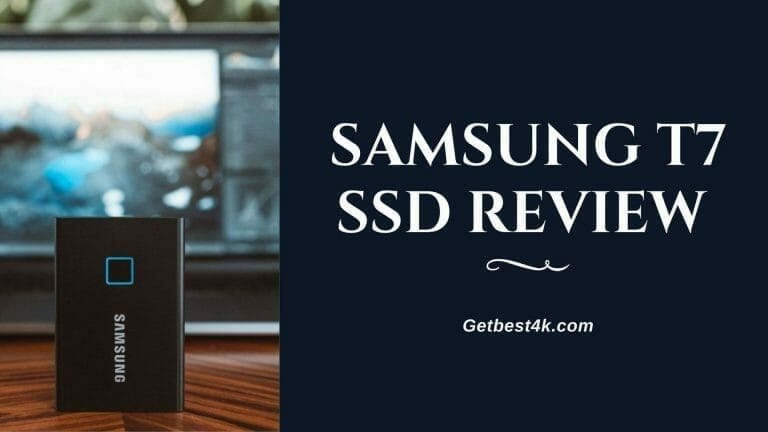Solid-state drives (SSDs) offer significant advantages like faster speeds and improved durability over traditional hard disk drives (HDDs). However, the biggest drawback to SSD drives is their limited lifespan and higher cost per gigabyte. Understanding these limitations is crucial for consumers looking to make informed choices regarding their storage options.
Brief Overview of SSD Advantages
Before diving into the drawbacks, it’s helpful to briefly summarize the main benefits that make SSDs an attractive storage option compared to HDDs:
- Faster read/write speeds – SSDs can be up to 10x faster than HDDs due to not having moving parts
- Lower access times – data can be accessed almost instantly rather than needing to locate it physically
- Better durability – no moving parts make SSDs more resistant to shock and vibration
- Lower power usage – SSDs consume much less energy, extending the battery life of laptops
- Compact size – SSDs take up much less physical space than HDDs
These advantages have fueled the rise in SSD adoption, but the drawbacks should be considered when comparing the two technologies.

Durability and Reliability Drawbacks
Lifespan Limitations of SSDs
Exploring the Concept of Write Cycles
One of the most significant drawbacks of SSDs compared to HDDs is their limited lifespan and durability. While SSDs have no moving parts that can fail mechanically, they still degrade over time with use.
This is because SSDs use flash memory chips to store data. These chips can only withstand a finite number of write/erase cycles before they begin to fail. This is known as the drive’s endurance rating, which is typically measured in terabytes (TB) written over the lifespan of the SSD.
For example, an SSD with a 200 TBW rating can withstand a total of 200 TB of data being written to it before the drive is likely to fail. This means if you write 10 GB per day, this SSD would last about 5-6 years typically.
Once an SSD starts approaching its write cycle limit, performance begins to suffer and the likelihood of errors and failure rises. Unfortunately, drive failure is not always predictable – some SSDs last longer while others fail before the rated cycles.
Difficulty in Data Recovery from Failed SSDs
When an HDD fails, specialized data recovery services can often recover some or all of the data on the drive. However, recovering lost data from a failed SSD is very difficult and sometimes impossible.
If the flash memory chips themselves are damaged or worn out, the data stored on them is likely unrecoverable. The lack of physical moving parts also means little “forensic” evidence that data recovery experts can analyze to attempt to rescue data.
Therefore, it’s critically important to have backups of important data stored on SSDs. The backup should be on a separate device or drive, as once an SSD fails, the data is essentially lost forever.
Comparing SSD and HDD Failure Rates
Overall, SSDs are considered more durable than HDDs when looking at mechanical failure rates. Having no moving parts greatly improves their shock/vibration tolerance and resistance to component wear.
However, several studies have shown SSDs may have a higher rate of sudden unrecoverable failures compared to HDDs. So, while they are less likely to experience minor gradual failures, when an SSD fails, it tends to occur unexpectedly and result in complete data loss.
This higher rate of unrecoverable failure is due to factors like write cycle limits and difficulties in data recovery mentioned earlier. Therefore, SSDs may need more frequent replacement than HDDs in order to minimize the chances of catastrophic data loss.
Cost Drawbacks
Price Comparison between SSDs and HDDs
One of the biggest barriers to mass adoption of SSDs is their higher cost compared to HDDs on a per gigabyte basis. SSD prices have been dropping steadily, but they are still more expensive than comparable capacity HDDs.
For example, a 2TB HDD currently costs around $50, while a 2TB SSD costs around $150. So, the SSD is three times more expensive for the same storage capacity.
This price disparity is mainly due to NAND flash memory chips still being more costly to manufacture than mechanical HDD components. The gap has narrowed over time, but SSDs remain a pricier option.
Analysis of Price Evolution over the Years
Looking at historical pricing trends, SSD storage costs have dropped dramatically – over 10x in the past decade. In 2012, the average cost per gigabyte for an SSD was around $1. Now it is under $0.10 per gigabyte.
Hard drive prices have also declined but at a slower rate. In 2012, the average HDD cost around $0.05 per gigabyte. That has since fallen to around $0.02 per gigabyte.
So while SSD prices have dropped at a faster rate, they are still 4-5 times more expensive than HDDs per gigabyte. Manufacturing advances will likely close this gap further, but HDDs will continue to maintain a cost advantage.
Why SSDs are Still More Expensive for the Same Capacity
There are a few key reasons why SSD pricing remains higher than HDDs despite the faster price drops:
- NAND flash chips are more costly to manufacture than HDD platters
- Scaling up flash capacity adds expense due to complexity
- HDD manufacturing has better economies of scale currently
- Lower consumer demand compared to HDDs limits SSD supply scale
Essentially, it comes down to SSD technology still being relatively newer and production not yet reaching the same maturity and scale as mechanical hard drives. As SSD adoption grows, increased economies of scale and manufacturing improvements should continue to push SSD prices down closer to HDD levels.
Capacity Drawbacks
Maximum Capacities: SSDs vs HDDs
In addition to higher cost per gigabyte, SSDs also currently have more limited capacities compared to HDDs. The maximum capacity currently offered by HDDs is around 20TB for consumer models. Enterprise models can scale up to 60TB.
In contrast, the largest consumer SSDs available are around 8TB. Enterprise SSDs can reach around 30TB. So HDDs can still offer 2-3x higher maximum storage capacity than SSDs.
This is again tied to difficulties in scaling up flash memory chip capacity and density. While capacities are improving, SSD technology has not yet reached the same levels as mechanical HDDs.
The High Cost of High Capacity SSDs Not only are maximum SSD capacities lower than HDDs, but the highest capacity SSD models are extremely expensive compared to HDD equivalents.
For example, a top-of-the-line 8TB SSD currently costs over $1000. A 20TB HDD, on the other hand, can be purchased for around $450. So you pay a huge premium for extra SSD capacity. Getting a high-capacity SSD over 1TB can get very costly compared to an HDD with the same storage space. This again comes back to the challenges of scaling up flash memory chip capacity. R&D and manufacturing of high density SSDs adds significant cost. Those costs are passed on to the consumer, resulting in very high prices for high-capacity SSDs.
Performance Decline Drawbacks
How SSD Speeds Slow Down as the Drive Fills Up
One drawback to SSD performance is that speeds tend to decline as the drive fills up. This is known as write amplification.
As an SSD’s flash memory cells fill up, the controller has to work harder to find available cells to write new data. This results in increased write latency and lower write speeds.
For example, a benchmark test on an empty 250GB SSD gave a write speed of 524 MB/s. On the same drive filled to 90% capacity, writes slowed to around 250 MB/s.
So while SSDs are much faster than HDDs, keeping free space on the drive is key to maintaining those peak speeds as the drive fills up.
The Influence of Wear and Tear on SSD Speeds
In addition to capacity, the overall condition of an SSD also impacts performance. As flash memory cells wear out from repeated write cycles, access times increase and write speeds slow down.
Most SSD controllers work to mitigate this by moving data around to less worn cells. However, over time, high amounts of wear will degrade performance. This effect worsens as the drive nears its endurance limits.
In contrast, HDD speeds tend to remain consistent over the drive’s lifetime, only dropping significantly once mechanical failure begins. So an old HDD can often maintain speeds close to a new model, while a worn SSD will slow down despite still being operational.
File System Support Drawbacks
File Systems Not Optimized for SSDs
Most modern file systems were developed and optimized for HDDs. As a result, they are not always efficient when used with SSDs.
For example, Microsoft designed the NTFS file system to be used with Windows systems and mechanical hard drives. Features like disk defragmentation can actually decrease SSD performance and lifespan.
Using NTFS on an SSD causes extra write activity that provides no benefit. File systems designed specifically for use with SSDs (like ReFS) can avoid these downsides.
The Role of TRIM and Other SSD Features
In addition to the file system, operating systems need SSD-specific optimizations like TRIM to function properly on SSDs. TRIM allows the SSD to handle garbage collection and clearing of invalid data efficiently.
Without TRIM, performance will degrade over time as invalid data accumulates. Enabling TRIM and other OS optimizations for SSDs is crucial to getting consistent performance.
Older operating systems sometimes lack full support for these features. So, using an SSD with an outdated OS can lead to a suboptimal experience.
Security Drawbacks
The Risk of Recoverable Data Remnants
When files are deleted on an SSD, remnants of data may remain in cells that are not completely erased by the controller. This can pose a security risk if sensitive data remains recoverable from an SSD that a user thought was safely wiped.
Sophisticated data recovery techniques may be able to reconstruct traces of old data from an SSD, unlike HDDs which completely overwrite data with physical magnetization changes.
SSD controllers work to mitigate this issue, but there is still some risk of data remnants persisting. Special SSD erasure utilities can help minimize this risk by overwriting all cells.
The Variability of Full Drive Encryption Implementation of full drive encryption to protect data can vary across different SSD models and manufacturers. Most SSDs utilize the AES encryption algorithm to encrypt data on the drive. However, factors like encryption key generation and management can differ.
Some SSDs handle encryption fully within the drive controller hardware, while others rely on software encryption that is dependent on OS support. Hardware-based encryption is generally more secure and doesn’t impact performance. So, there can be variability in encryption robustness depending on the specific SSD make and model. Understanding how the encryption is implemented is important when choosing an SSD for sensitive data security.
Conclusion
Assessing the Biggest Drawback of SSDs
When considering all the drawbacks discussed, the higher cost per gigabyte of SSD storage is likely the most significant hurdle to wider adoption. The pricing gap compared to HDDs remains substantial despite declining SSD prices.
For budget-conscious consumers and enterprises, HDDs continue to offer much more affordable storage. SSD pricing will need to move closer to HDD levels before they are viewed as a complete replacement rather than a premium option.
Understanding SSD Drawbacks: Durability, Capacity, and Cost
Beyond pricing, the limited durability/lifespan of SSDs, along with lower maximum capacities, are also important drawbacks to factor for many use cases.
If extremely high storage density or archival storage is needed, HDDs may be required. HDDs may provide more confidence in avoiding catastrophic failures for frequently written data or mission-critical applications.
So while SSD advantages are compelling, HDDs retain benefits around cost, capacity, and reliability that are pivotal for many storage needs.
Why Knowing SSD Drawbacks Can Help Set Proper Expectations
Being aware of these key SSD drawbacks enables setting realistic expectations when deploying and managing SSD storage. It also allows taking steps to minimize the downsides where possible through proper setup and maintenance.
With a balanced understanding of both upsides and downsides, SSDs and HDDs can complement each other rather than SSDs needing to displace HDDs in all situations fully.
Each technology has ideal use cases. By understanding the drawbacks of SSDs, enterprises and consumers can best leverage the strengths of both SSDs and HDDs for an optimal storage environment.
What is the Biggest Drawback to SSD Drives FAQs
What is the Average Lifespan of an SSD?
The average lifespan of an SSD before failure is typically between 3-5 years for a consumer-grade drive that sees moderate daily usage. However, SSD lifespan varies widely based on factors like usage intensity and drive quality. A high-end enterprise SSD used for less demanding tasks could last 10 years or longer.
How Do SSD Prices Compare to HDD Prices?
Currently, SSD prices are approximately 4-5 times higher than HDDs for the same storage capacity. A 1TB SSD averages around $100, while a 1TB HDD costs around $20. SSD prices have been steadily dropping but continue to command a significant premium over HDDs.
How Does the Capacity of an SSD Compare to an HDD?
Consumer HDD capacities currently top out around 20TB, while enterprise models reach 60TB. Consumer SSD capacities max out around 8TB, with enterprise SSDs reaching around 30TB. So HDDs can offer 2-3x higher maximum capacity than SSDs. High-capacity SSDs are prohibitively expensive compared to HDDs.
How Does Filling up an SSD Affect Its Performance?
As an SSD fills up, write speeds will slow down substantially due to write amplification effects. An empty SSD can write at 500+ MB/s, while a nearly full SSD may slow to 200 MB/s or less. So, maintaining free space is important for consistent SSD performance.
What Are the Main Security Concerns with SSDs?
The two main security risks with SSDs are potential data remnants after deletion and variability in encryption robustness. SSD controllers may not completely erase all old data traces when files are deleted, or drives are formatted. SSD encryption quality depends on manufacturer implementation, with software encryption being less secure than hardware encryption.
- Best Gimbals for BMPCC 6K in 2025: A Complete Guide - June 11, 2025
- Blackmagic Rec.709 LUT Download - June 11, 2025
- How to Delete Files on Blackmagic 6K - January 8, 2025
